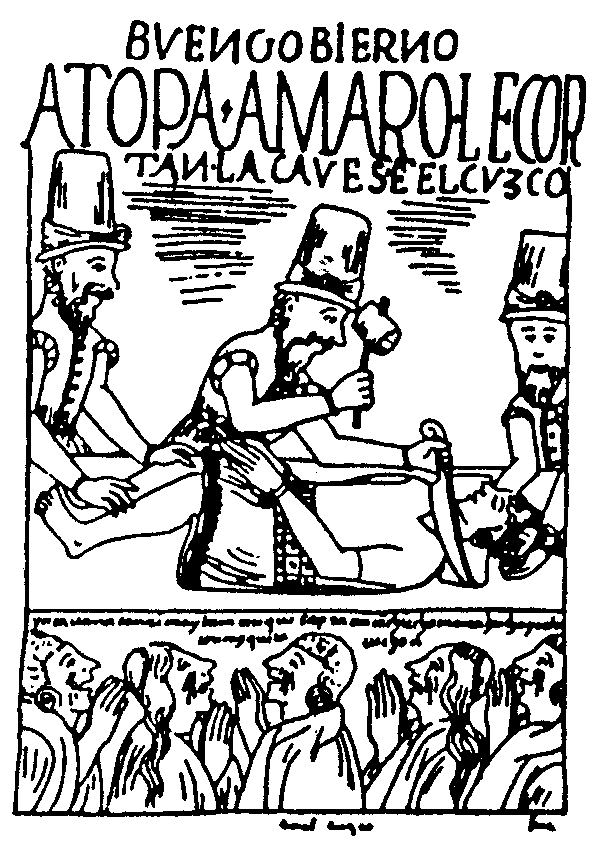Spanish Arrival
The Spanish explorer Francisco Pizarro, along with a small military retinue, landed on South American soil around 1526. The Spanish recognized the wealth and abundance that could be had in this territory; at this point the Inca Empire was at its largest, measuring around 690,000 square miles. In 1528 Pizarro went back to Spain to ask for the official blessing of the Spanish crown to the conquer the area and become governor. He returned with his blessings around 1529 and began the official takeover of the region.
Inca Civil War
Although Pizarro had a small force behind him, many problems within the Inca Empire worked to his advantage between 1528 and 1533. Foremost among these was the Inca Civil War, which is also known as the War of Succession or the War of Two Brothers. It began to brew just one year after Pizarro first landed in the region. Around 1528, the ruling Inca emperor, Huayna Capac, and his designated heir, Ninan Cuyochic, died of disease. It was most likely smallpox, which had quickly traveled down to South America after the arrival of Spanish explorers in Central America. Brothers Huascar and Atahualpa, two sons of the emperor Huayna Capac, both wanted to rule after their father's death.
Inca Emperor Atahualpa
Although Atahualpa successfully won the Inca Civil War and ruled as emperor, he was soon captured by the Spanish and killed in 1533.
Initially, Huascar captured the throne in Cusco, claiming legitimacy. However, Atahualpa had a keen military mind and close relations with the military generals at the time, and proved to be the deadlier force. Between 1529 and 1532 the two brothers' armies waged warfare, with one or the other gaining a stronger foothold for a time. Atahualpa initially garnered favor with northern allies and built a new capital for his forces in Quito. By 1532, Atahualpa had overpowered his brother's forces via intrigue and merciless violence, scaring many local populations away from standing up to his power. This civil war left the population in a precarious position by the time it ended.
Spanish Colonization
Around the same time that Atahualpa seized the throne in 1532, Pizarro returned to Peru with blessings from the Spanish crown. The Spanish forces went to meet with Atahualpa and demanded he take up the “true faith” (Catholicism) and the yoke of Charles I of Spain. Because of the language barrier, the Inca rulers probably did not understand much of these demands, and the meeting quickly escalated to the Battle of Cajamarca. This clash left thousands of native people dead. The Spanish also captured Atahualpa and kept him hostage, demanding ransoms of silver and gold. They also insisted that Atahualpa agree to be baptized. Although the Inca ruler was mostly cooperative in captivity, and was finally baptized, the Spanish killed him on August 29, 1533, essentially ending the potential for larger Inca attacks on Spanish forces.
An engraved representation of the Battle of Cajamarca
This battle began in 1532, leaving thousands of native people dead and ending with the capture of Atahualpa.
Even though the Inca Civl War made it easier for the Spanish armies to gain control initially, many other contributing factors brought about the demise of Inca rule and the crumbling of local populations. As scholar Jared Diamond points out, the Inca Empire was already facing threats:
- Local unrest in the provinces after years of paying tribute to the Inca elite created immediate allies for the Spanish against the Inca rulers.
- Demanding terrain throughout the empire made it even more difficult to keep a handle on populations and goods as the empire expanded.
- Diseases that the population had never been exposed to, such as smallpox, diphtheria, typhus, measles, and influenza, devastated large swaths of the population within fifty years.
- Superior Spanish military gear, including armor, horses, and weapons, overpowered the siege warfare more common in the Inca Empire.
The Last Incas
After Atahualpa died and the Spanish seized control, they placed Atahualpa's brother Manco Inca Yupanqui in charge of Cusco as a puppet ruler while they tried to reign in the north. After a failed attempt to recapture the city from greater Spanish rule during this time, Manco retreated to Vilcabamba and built the last stronghold of the Inca. The Inca continued to revolt against totalitarian Spanish rule until the year 1572. In that year the Spanish conquered Vilcabamba and killed the last Inca emperor, Tupac Amaru, after a summary trial.

An image of the Spanish executing Tupac Amaru
The last Inca ruler, Tupac Amaru, was killed by Spanish forces in 1572, effectively ending any potential for an Inca uprising.
Spanish Rule
The Spanish named this vast region the Viceroyalty of Peru and set up a Spanish system of rule, which effectively suppressed any type of uprising from local communities.
The Spanish system destroyed many of the Inca traditions and ways of life in a matter of years. Their finely honed agricultural system, which utilized tiered fields in the mountains, was completely disbanded. The Spanish also enforced heavy manual labor taxes, called mita, on the local populations. In general, this meant that every family had to offer up one person to work in the highly dangerous gold and silver mines. If that family member died, which was common, the family had to replace the fallen laborer. The Spanish also enforced heavy taxes on agriculture, metals, and other fine goods. The population continued to suffer heavy losses due to disease as Spanish rule settled into place.